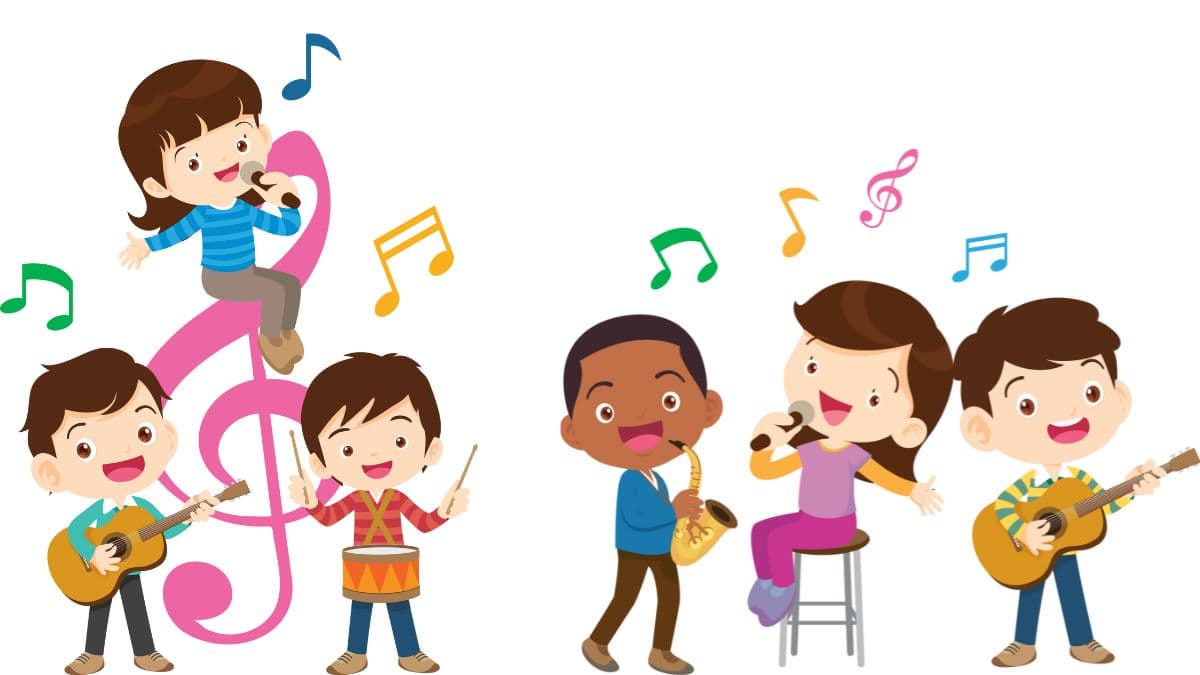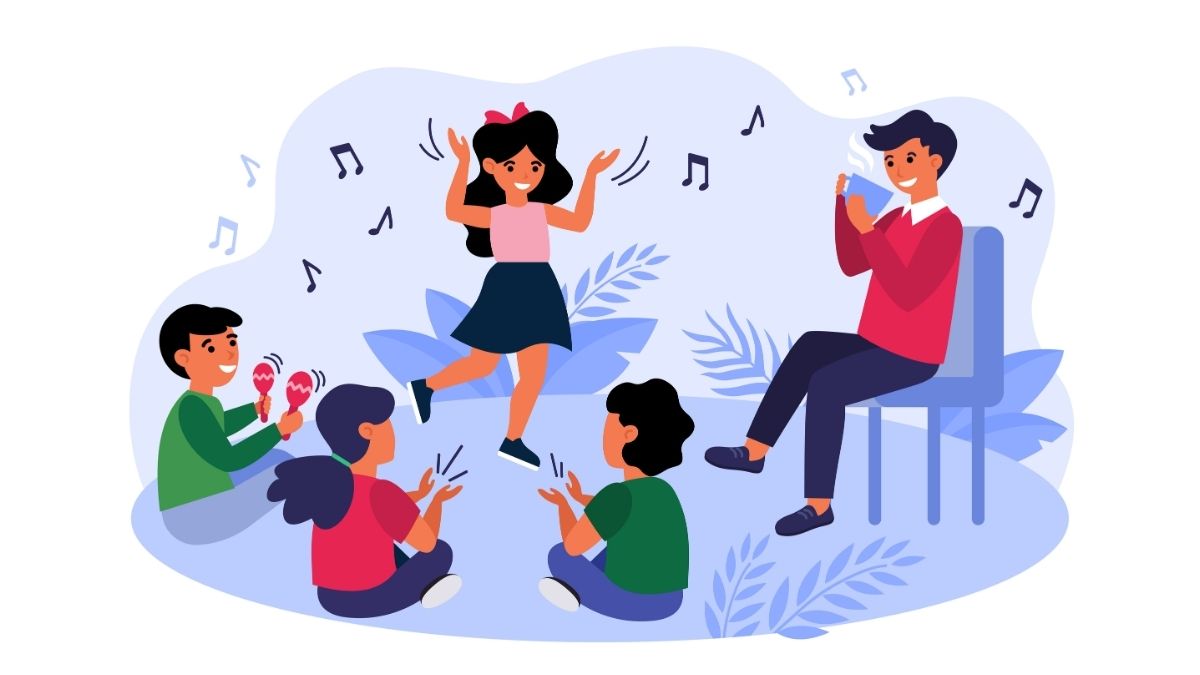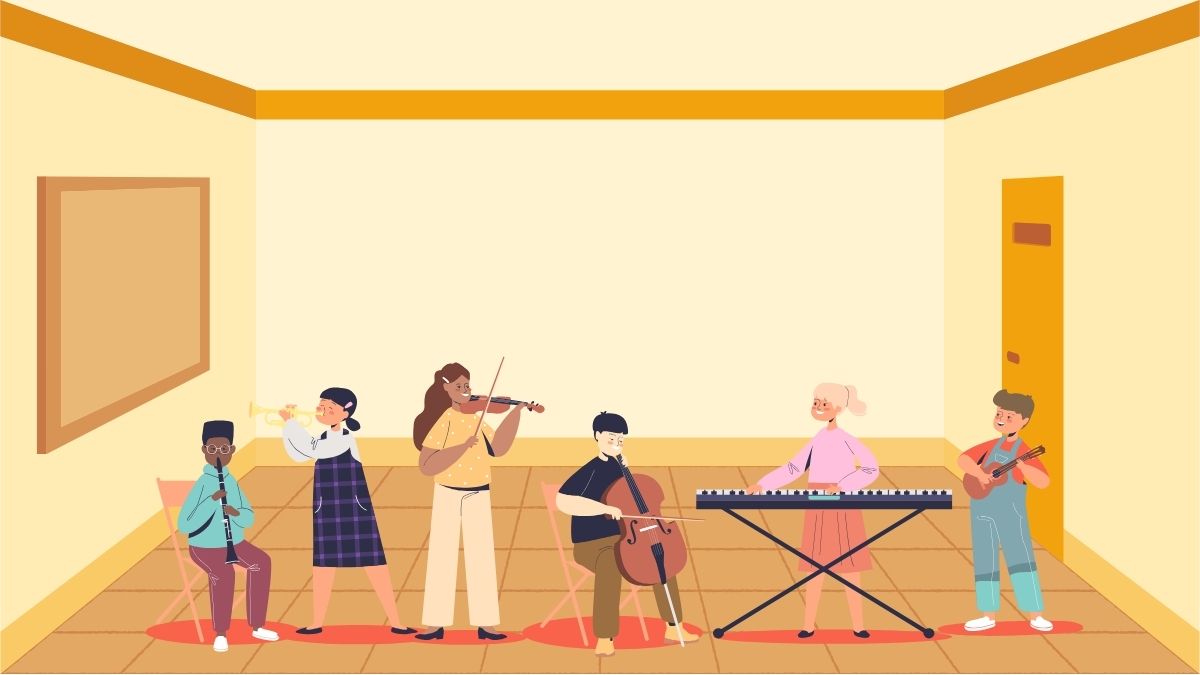Music and Emotions for Kids: A Harmonious Connection
Pinkey Sharma |
Music |
2024-08-22 |
7 mins read

Table of Contents
- Emotional Effects of Music on Children
- Emotional Effects of Music on Children with Special Needs
- Music and Emotional States for Kids
- Different types of music and emotions lessons for kids
- Feelings and Emotions: Music and Movement for Kids
- How Music and Emotions Affect Children's Well-being
- Music and the Emotional State for Kids
- Diverse Types of Music and Emotions Lessons for Children
- Feelings and Emotions: Music and Movement for Kids
- Conclusion
- FAQs
Admissions Open for
Music affects our emotions to a great extent, and much more so in children. From the happy rhythms of a popular song to the lulling tones of a lullaby, music can reach out to a sea of emotions and varied responses. This is an article that I wanted to share because it talks in detail about music and emotions for kids, including children with special needs. It discusses how different types of music can be used while teaching children about feelings. It also includes discussions about how music and movement activities can help children learn more about expressing emotions through music.
Emotional Effects of Music on Children
The effects of music on children are great and multi-dimensional, ranging from a change in mood to a child's behavior, even to their general emotional development.
1. Mood Regulation: Music is one great instrument for regulating mood. Upbeat, energetic songs increase the spirit and energy of the child, while soft and smooth melodies can help them relax and calm down. Parents and educators can use music to set up an infant-friendly environment and teach children how to manage their emotions in a healthy way.
2. Relieving Stress: By simply listening or playing music, the child can overcome stress and anxiety. Expressing emotions through music can overcome their pent-up feelings and thus relax.
3. Empathy and Emotional Understanding: It can further help children learn to be more empathetic and develop their self-awareness, as well as the feelings of others. Through songs that express feelings, a child becomes aware and learns to identify happiness, sadness, anger, and fear emotions.
Emotional Effects of Music on Children with Special Needs
There is an interrelation between Music and emotions for kids. Music is, therefore, of especial potency for the child with special needs in terms of emotional development and communication.
1. Communication Skills: Most children with special needs, for example those who are on the autism spectrum, may struggle to tell what they are feeling. Well, music is going to turn out to be an ideal substitute means of communication for such children. They can express what they are feeling through singing, playing musical instruments, or even just listening to music; which otherwise, they would find hard to convey by talking.
2. Socializing: Group music activities, such as singing in a choir or engaging in the music therapy process, can help children with special needs develop social skills. Activities like these trigger communication, cooperation, and common emotional experiences that are very useful in developing the social skills of children who feel challenged by this component of their lives.
3. Emotional Regulation: It has been researched and documented that music therapy can do wonders in balancing the emotional levels of special children. Music may be used to facilitate calmness during periods of stress or agitation, and also to promote a positive emotional reaction from a child in therapy.

Music and Emotional States for Kids
Other kinds of music are capable of arousing other emotional states in children. It is for this reason that the relationship, when understood, helps the parents and educators make good use of music in supporting the well-being of the child's emotions.
1. Joy and Excitement: Fast rhythmic music very often reflects the feeling of joy or excitement. Having a strong beat to go along with great, positive words, songs are able to pump the kids to be joyful and enthusiastic. Examples include upbeat pop songs, dance music, and children's songs that have funny and catchy tunes.
2. Serenity and Calm: Slowed-down, melodic music with soothing harmonies can create calm, relaxing feelings. Classical music and lullabies are examples to help a child relax and unwind. These are most helpful during bedtime or quiet time.
3. Sadness and Reflection: Since music and emotions for kids are connected, any music that is written in minor keys or even those with slower tempos creates a feeling of sadness or reflection. While it might seem awkward, playing sad music for children is actually good because it is good for them to be able to know and sort out their feelings of sadness. Reflective music helps children understand that it is okay to be sad sometimes and that it forms part of life.
Different types of music and emotions lessons for kids
Teaching children the kinds of music and the emotions that go with them is a wonderful type of education. Here are a few ideas for lessons that will help kids begin to understand music and emotions.
1. Music Matching: Provide several music selections to the children and have them match each with an emotion. You can do something such as play happy music and then ask if that makes them feel happy or sad. You can ask them “Why or What makes them think that?”
2. Music and Art Integrated: Put together music and art. Have the children draw or paint to different kinds of music. Request them to create artwork that reflects what they feel at that very moment as they are listening. It's a great activity in making children experiment with feelings through various styles of expression.
3. Storytelling to Music: Play music during storytelling sessions to create the atmosphere. Select different music pieces that match various parts of the story. For instance, suspenseful music for tense moments and cheerful music for happy endings. Ask children to discuss how the music changes the way they feel about the story.
4. Emotion-based playlists: Have playlists that a specific feeling is attached to and use them during various activities. For example, a "happy playlist" for playtime, a "calm playlist" for quiet activities, and a "brave playlist" for times when they really need that extra confidence boost. This can really help a child learn how to use music intentionally to help affect their emotional state.
Feelings and Emotions: Music and Movement for Kids
It is an excellent way to combine music and emotions for kids to provide the child an outlet for physical expressions of feelings. Music and Movement Activities can be both fun and therapeutic.
1. Dance Party: Organize a dance party with songs that stimulate different emotions. Ask the children to dance to express how the music makes them feel. For instance, they can dance vigorously during happy music and slowly during sad music. The activity helps children relate their actions in their bodies to their emotional responses.
2. Music for Yoga: Incorporate light, soft music in yoga classes to create a soothing environment for students to sit and make sense of the feelings and emotions arising in their minds. Associate different emotions with various yoga poses in which students can focus on how they feel when they are holding the postures.
3. Emotional Scavenger Hunt: Have a scavenger hunt where children look for things that would relate to the emotions expressed through the various songs. For example, if it is a happy song, let them go and look for anything that makes them happy. This activity provokes the idea that causes them to relate the music to their emotions and the environment around them
How Music and Emotions Affect Children's Well-being
The principal preference that can affect the children's emotions is music. Thus, it is possible for parents, educators, and therapists to use the power of music in order to positively contribute to the emotional development and mental health of their children. This extended investigation gives insight into how music influences the emotions of children with special needs, how music affects the emotional states of children, how various types of music can be used while teaching about emotions, and how music along with movement activities can be incorporated to derive better benefits.

Music and the Emotional State for Kids
One of the peculiar properties of music is the ability to change and bring about enhancement in the emotional states of children, which affect their mood, behavior, and mental health.
1. Mood Boosting: Upbeat and happy music has the effect of lifting a child's mood in less than seconds. Fast tempo and major keys, combined with positive lyrics, work to inject energy and joy into a child's day. The increase in this mood adds up to create a positive outlook in the child, consequently making him or her likely to relate positively with peers and adults.
2. Emotional release: Music can release one's emotions, so to say. The process of listening to or creating music will allow a child to express his or her feelings of sadness, anger, and fear in a safe manner. Emotional release of this kind will help prevent the accumulation of feelings that could result in mental illnesses.
3. Behavioral Regulation: The music can be used to regulate a child's behavior by changing his or her emotional state. Calm, serene music might be played to take the child into a calming mode after an intensive or active session or to set a background in which concentration is required, such as while doing homework or reading a book. As a contrast, fast music sets energy into the body and gets kids moving and active.
Diverse Types of Music and Emotions Lessons for Children
Teaching children that music and emotion are related can be a very enriching educational experience. They will learn how to differentiate different kinds of music to help them express their feelings.
1. Identifying Emotions: Exposing children to many types of music and asking for identification regarding the emotions they feel educates them not only in recognizing but also in labeling their emotional responses. It could mean listening to classical pieces to note feelings of calm, excitement, or tension; probably popular songs to discuss joy, sadness, or empowerment.
2. Musical Self-Expression: It will be the operationally integrated lesson on music and emotions that challenges children to compose their own musical pieces that express their emotions. The kind of activity that provokes this creativity is one that makes children very sensitive to how the different musical elements, such as tempo, key, and rhythm, may be used in expressing emotions through music.
3. Developing Empathy: Training in playing different styles of music from across cultures with their emotional settings will enhance empathy in children. Children are taught an appreciation of how all types of music from across the globe convey a universal set of feelings and emotions, hence developing a world perspective with a better emotional understanding.
Feelings and Emotions: Music and Movement for Kids
What is more, getting them to understand and express their feelings is done in a dynamic way by incorporating movements with the music. Music and movement activities offer loads of benefits for children's emotional well-being.
1. Physical Expression of Emotions: Children are engaged in physical expression through movement activities like dance or rhythmic exercises. They stamp their feet onto the ground to indicate anger, sway to show sadness, or jump up in any direction to indicate joy. This physical expression may prove especially beneficial to young children who lack the proper vocabulary to explain feelings.
2. Mind-Body Connection: Pairing the music with movement helps create a strong inner relationship between the mind and the body in children. As the children move with the music, they become a lot more mindful of what their body feels like when they are experiencing certain emotions. This can then lead to better ways to regulate one's emotions and handle tough and stressful moments.
3. Group Dynamics and Social Skills: It helps children learn to work together by doing things like synchronized dancing or musical games with a group. Activities like these have children watching others for prompts, staying in turn, and moving together in harmony. This enhances social skills and raises their emotional intelligence.
Conclusion
The strong power between music and emotions for kids significantly uplift the emotional well-being of children. From providing an outlet of emotional expression for those children with special needs, regulating moods, and teaching empathy, music has the exceptional capability to touch young hearts and minds alike. We can help create rich, supportive environments by putting forward emotional growth and well-being through the incorporation of music types, emotion lessons, music, and movement activities. The more research goes on to outline the deep effect of music on the children's emotional health, the clearer it becomes that music is a necessity which should feature in the life of every child.
FAQs
1. How does music help children develop emotionally?
Music provides a safe space for children to explore their emotions, experiment with different sounds and rhythms, and express themselves authentically.
2. How does music relate to emotions?
Listening to (or making) music increases blood flow to brain regions that generate and control emotions.
3. How does music impact kids?
Based on inborn talent, the music and emotions for kids bind with each other. A piece of music can evoke strong emotions of joy, sadness, bravery, cheer etc. among kids. Exposing children to music during early development helps them learn the sounds and meanings of words. Dancing to music helps children build motor skills while allowing them to practice self-expression
Liked our blog? Share it in your community and subscribe to our page!
CBSE Schools In Popular Cities
- CBSE Schools in Bangalore
- CBSE Schools in Mumbai
- CBSE Schools in Pune
- CBSE Schools in Hyderabad
- CBSE Schools in Chennai
- CBSE Schools in Gurgaon
- CBSE Schools in Kolkata
- CBSE Schools in Indore
- CBSE Schools in Sonipat
- CBSE Schools in Delhi
- CBSE Schools in Rohtak
- CBSE Schools in Bhopal
- CBSE Schools in Aurangabad
- CBSE Schools in Jabalpur
- CBSE Schools in Jaipur
- CBSE Schools in Jodhpur
- CBSE Schools in Nagpur
- CBSE Schools in Ahmednagar
- CBSE School In Tumkur

Call Us to know more about Orchids
Swipe Up

















